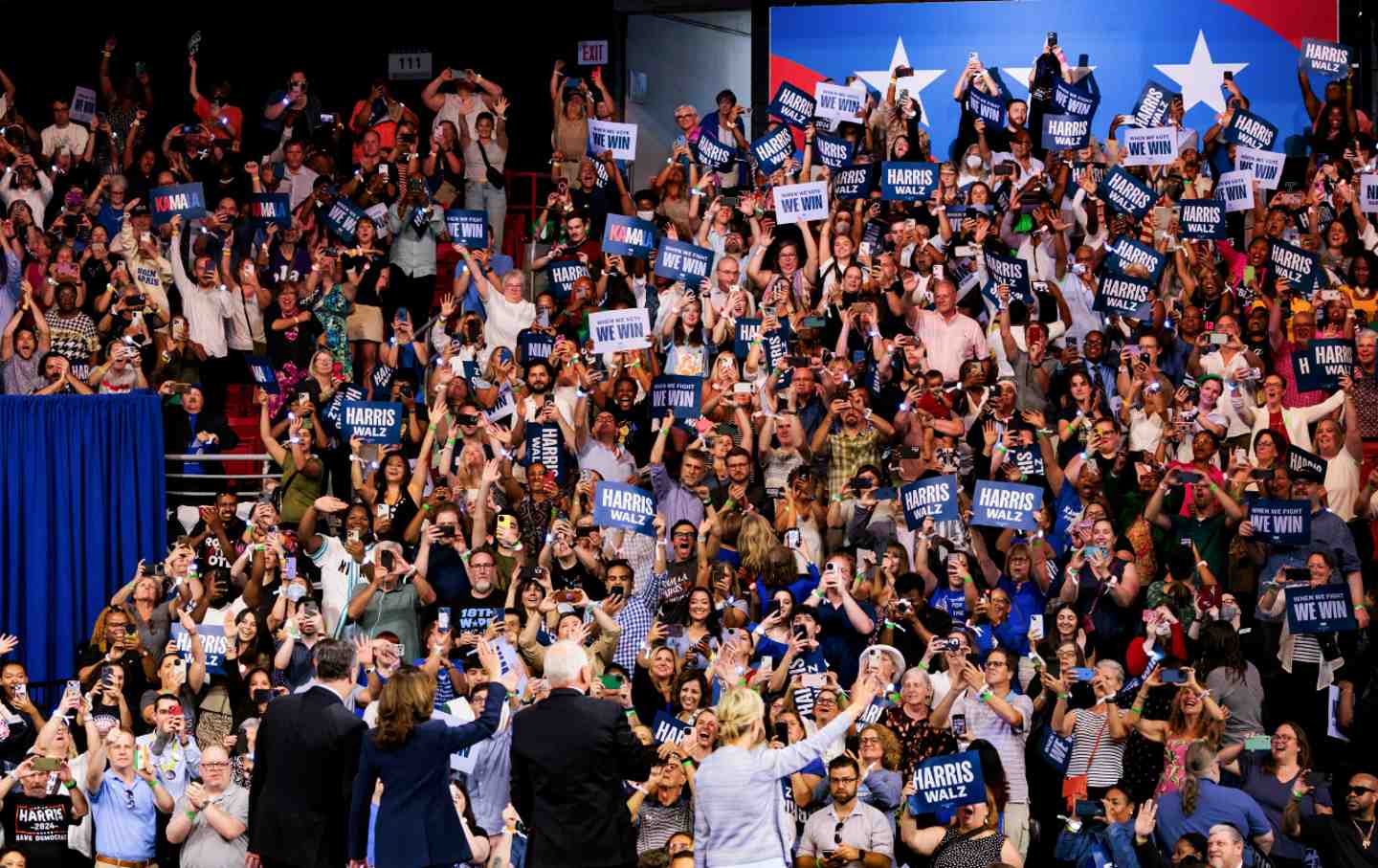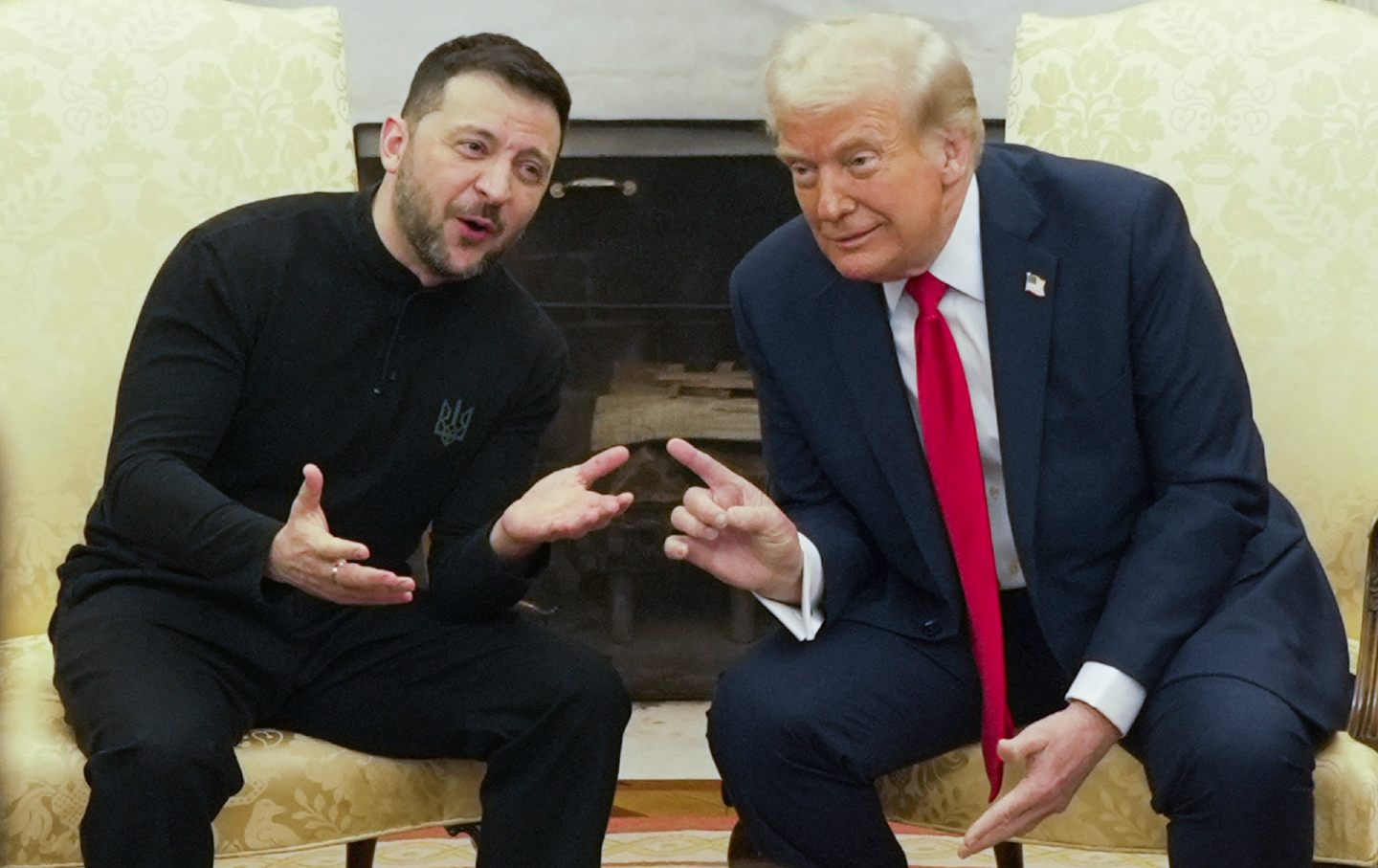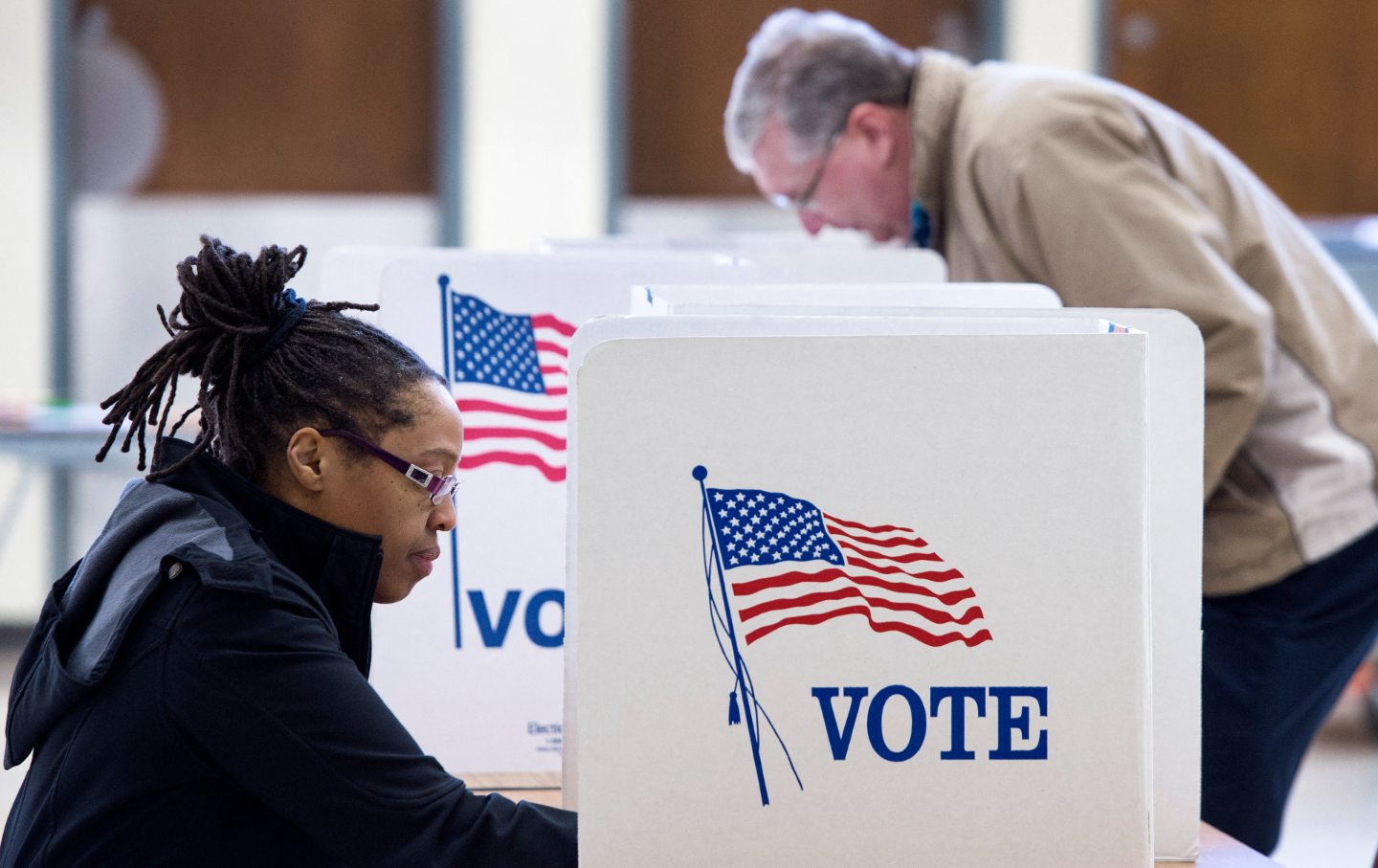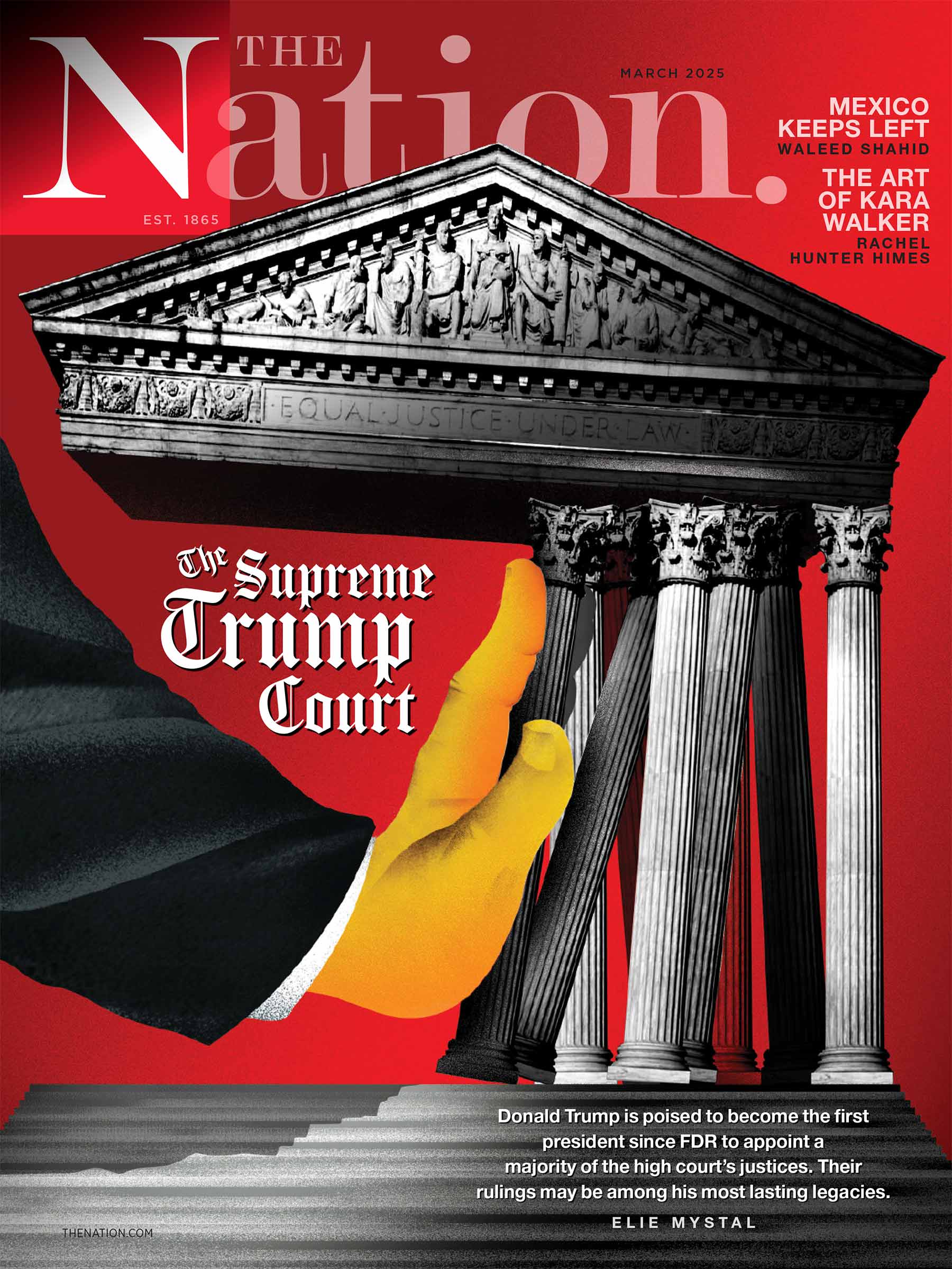It’s Not About Harris “Moving to the Center”
Mobilizing and energizing the base is the priority, not to be scorned.

The kickoff of Kamala Harris presidential campaign has been a stunning success. The Democratic Party base has been reenergized; young people are engaged. Raucous crowds greet the ticket across the swing states. Money and volunteers are pouring in. Harris’s relative youth and energy contrasts sharply with Trump’s cankered venom. The selection of Minnesota Governor “Coach” Tim Walz—a Midwestern white guy from central casting—turbocharged the takeoff. Everyone from Joe Manchin to Alexandria Ocasio-Cortez is applauding. Democrats, as AOC posted, are demonstrating “ disconcerting levels of array.”
Despite having served as a senator and vice president, Harris has only begun to introduce herself to the American people. The opening stage will culminate in her speech accepting the nomination at the Democratic Convention in Chicago next week—and that will lead to the final two-month sprint to the election.
For all the early unity, Harris is already getting pressure from conservative Democrats, big-business interests, and the carriers of conventional wisdom to “move to the center.” The choice of Walz is presented as “caving” to progressives—a “missed opportunity,” the New York Times political analyst Nate Cohn says, to define herself as more centrist. Early polls suggest that many see her as very liberal. Trump and Republicans paint her as an extreme radical, a female Trotsky.
The conventional commentariat echoes the refrain. The Washington Post editorialized that the addition of Walz “gives her opponents a clearly defined target: a ticket that leans toward out-of-touch liberalism…. With Mr. Walz on the ticket, she should feel freer to reach to the center, rather than keeping a wary eye trained on her left.”
New York magazine’s Jonathan Chait, the relentless Javert on the hunt for any progressive stirring, argues that to make up for Walz, Harris needs to adopt positions “that will upset progressive activists” and “understand that the likelihood a given action or statement will create complaints on the left is a reason to do something, rather than a reason not to.”
Chait doesn’t deign to reveal how Harris should rile her base. Instead, he invokes Trump as a model, arguing that the Donald’s “softening” of the abortion plank at the Republican convention “was a smart move to reduce the party’s exposure to unpopular positions” and didn’t cause a fracturing of the party, despite grousing from anti-abortion zealots.
Really? It takes a fervid imagination to believe that Trump’s cynical repositioning on abortion makes a whit of difference to voters concerned about the reversal of Roe v. Wade. The only thing Trump gained was the admiration of pundits like Chait who consider such political posturing to be sophisticated.
When commentators urge Harris to “move to the center,” they seldom detail how she should do that without sacrificing integrity. She is a mixed race, pro-choice, feminist, socially liberal presidential candidate from California. She can’t attempt to mask that without looking utterly disingenuous.
Moreover, this is a deeply polarized country. Over the past wink of time, we’ve suffered a catastrophic presidential debate, an attempted assassination, a president withdrawing from the race, the debut of Harris and her new running mate—and the polls have barely budged. In this context, mobilization and energy of the base are first priorities, not something to be trifled with. If there is any lesson to be drawn from Trump’s campaigns, it is his discipline in feeding red meat to his MAGA base to keep them aroused.
Ironically, Harris has never been a progressive leader in the mode of Bernie Sanders or Elizabeth Warren. She’s already jettisoned the signature progressive policies that she donned in her brief, ill-defined 2020 presidential run. Medicare for All, the Green New Deal, opposition to fracking are all on the cutting-room floor. As major donors push her to back away from Biden’s anti-trust offensive, her ally Maryland Governor Wes Moore suggests that she’s not averse. She’s already reached out to the gimmietarians in the cryptocurrency crowd.
The real challenge for Harris is not how she insults the left but how she makes herself into a credible champion of the economic concerns of working people. Trump has consolidated a base among white working people (and growing numbers of black and Latino voters as well) by combining social reaction—assailing immigrants, Muslims, liberals, the LGBTQ community—with an America First populism that is protectionist for muscular jobs in industries like Big Oil (“liquid gold”). Harris can’t and shouldn’t compete with those moved by Christian nationalism or racial division, but she can and should seek to cut away at his support by making a more compelling argument on what produced the economic distress and growing despair among working people, the obscene inequality that eviscerated the middle class—and what can be done about it.
In her first weeks, Harris has started this effort. Her early ads and rallies invoke her background as a prosecutor in contrast with Trump: having prosecuted “the predators, the fraudsters, the cheaters, I know the Donald Trump type.” She ties her childhood as the daughter of a single mother, working at McDonalds, with her commitment to working families—lowering healthcare costs, making housing more affordable—again in contrast to Trump’s silver-spoon childhood and agenda of tax cuts for the rich. She’s made clear her commitment to unions and to workers fighting for a decent contract.
Her stump speech highlights her commitment to “an economy that works for working people” with a practical agenda—paid family and medical leave, affordable childcare, taking on Big Pharma to lower drug prices, making healthcare more affordable. Walz reinforces that message because he’s actually passed such measures in Minnesota. And much of this agenda was passed by the Democratic House in Biden’s first two years, only to be blocked in the Senate by Republican opposition. As to “moving to the center,” these are all incredibly popular programs, supported by the vast majority of Americans.
In this context, the contrast between the Trump and the Biden-Harris administration adds to the case. Under Biden, there’s been a manufacturing revival, a sharp contrast to Trump’s term. Under Trump, the share of population without health insurance rose; under Biden, more are covered than ever. Trump’s “infrastructure weeks” were a running joke. Biden actually got the rebuilding started.
Popular
“swipe left below to view more authors”Swipe →For this to bite, Harris must become more populist, not less. She must be clear that she will raise taxes on the rich to pay for affordable childcare, that she will take on Big Pharma to lower drug prices, break up corporate monopolies to lower prices, take on Big Oil and invest in renewable energy, addressing the accelerating climate catastrophe and capturing what already are the growth industries of the next decades. Again, the contrast with Donald Trump’s promising oil executives that he’ll do their bidding if they’ll ante up $1 billion for his campaign is telling.
It’s less than three months to the election—an eternity in political time. Much can and will happen to transform the campaign: The Middle East could blow up; the economy could turn down; Trump’s age and declining capacity could become a central issue. What’s clear is that Harris and Walz have roused the Democratic base. Now it’s time to reach out, not push off.
More from The Nation

The Most Disgraceful Foreign Policy Spectacle in US History The Most Disgraceful Foreign Policy Spectacle in US History
Donald Trump and JD Vance tried to humiliate Volodymyr Zelensky on Friday with the whole world watching.

Trump Undoes Environmental Protections Trump Undoes Environmental Protections
Denying reality as climate disasters spread.

DOGE Takes a Chain Saw to Federally Funded Scientific Research DOGE Takes a Chain Saw to Federally Funded Scientific Research
The Trump administration’s efforts to reorient the country away from cutting-edge research will be felt by nearly every area of science.

Oaxaca, Mexico, Street Art Oaxaca, Mexico, Street Art
Art collectives connect past and present.
OppArt / Subterráneos and Peter Kuper

States Won’t Tell Us How to Win the Next Election. We Need to Look to the Counties. States Won’t Tell Us How to Win the Next Election. We Need to Look to the Counties.
An accurate understanding of the geography of our nation shows that our reach and power is more promising than we may feel at the moment.



